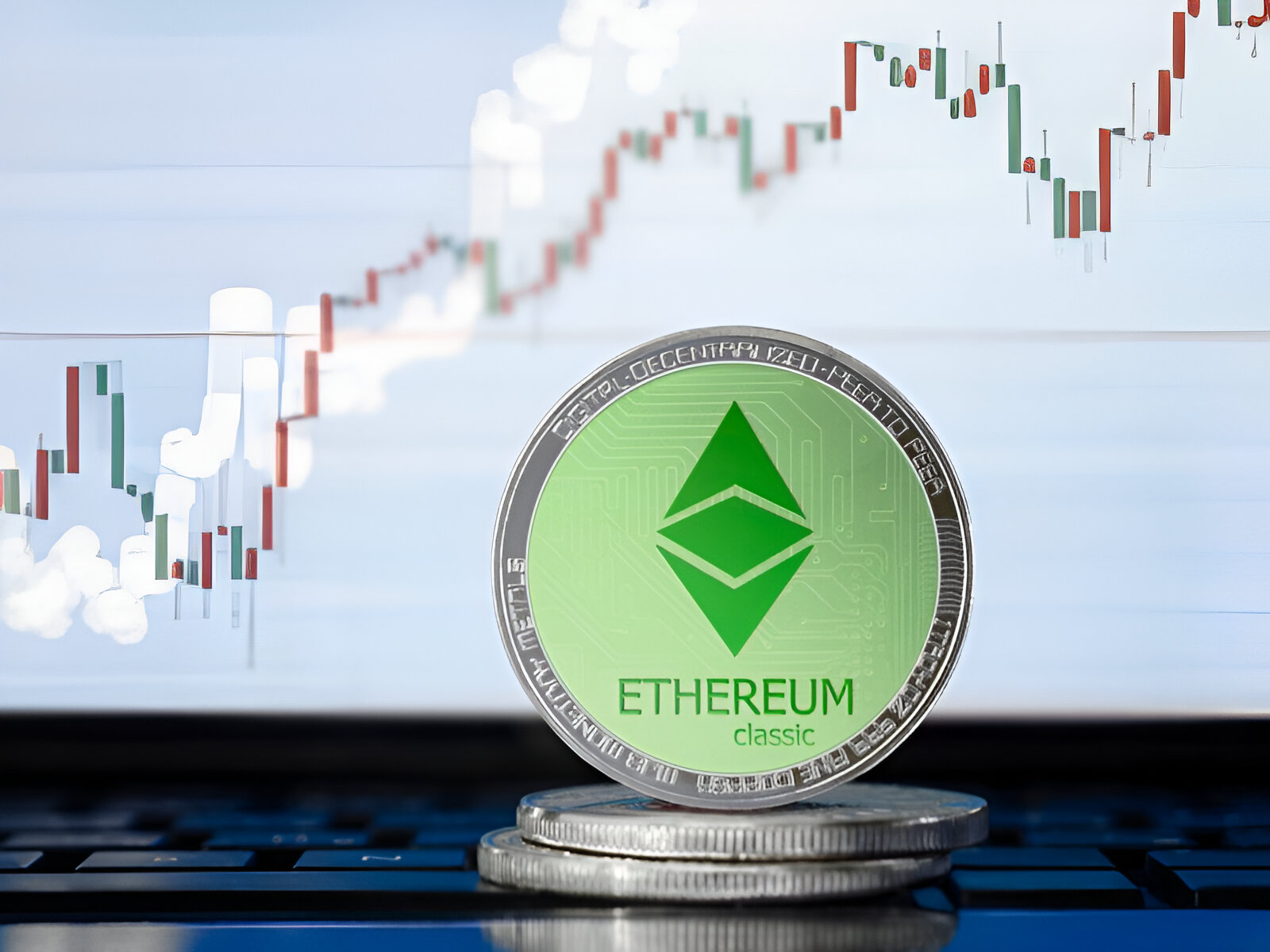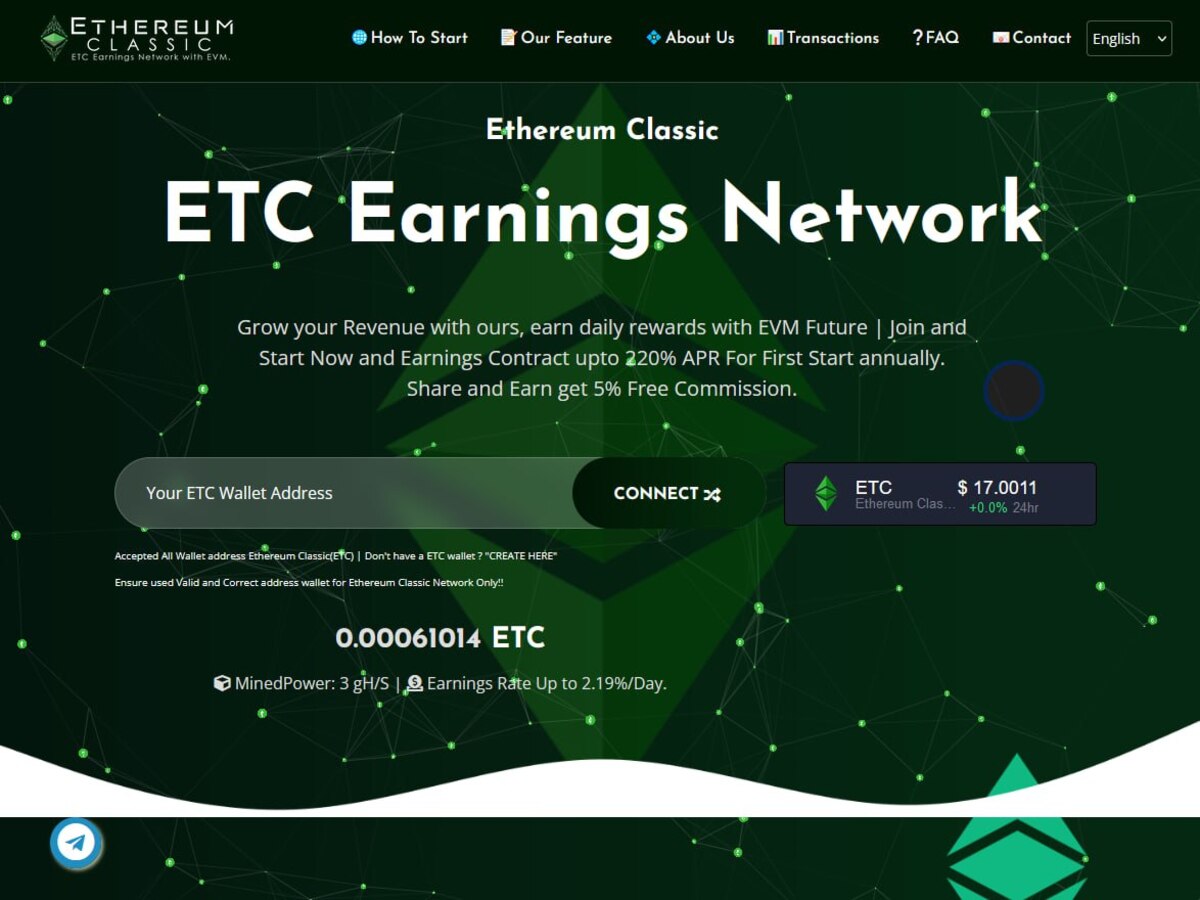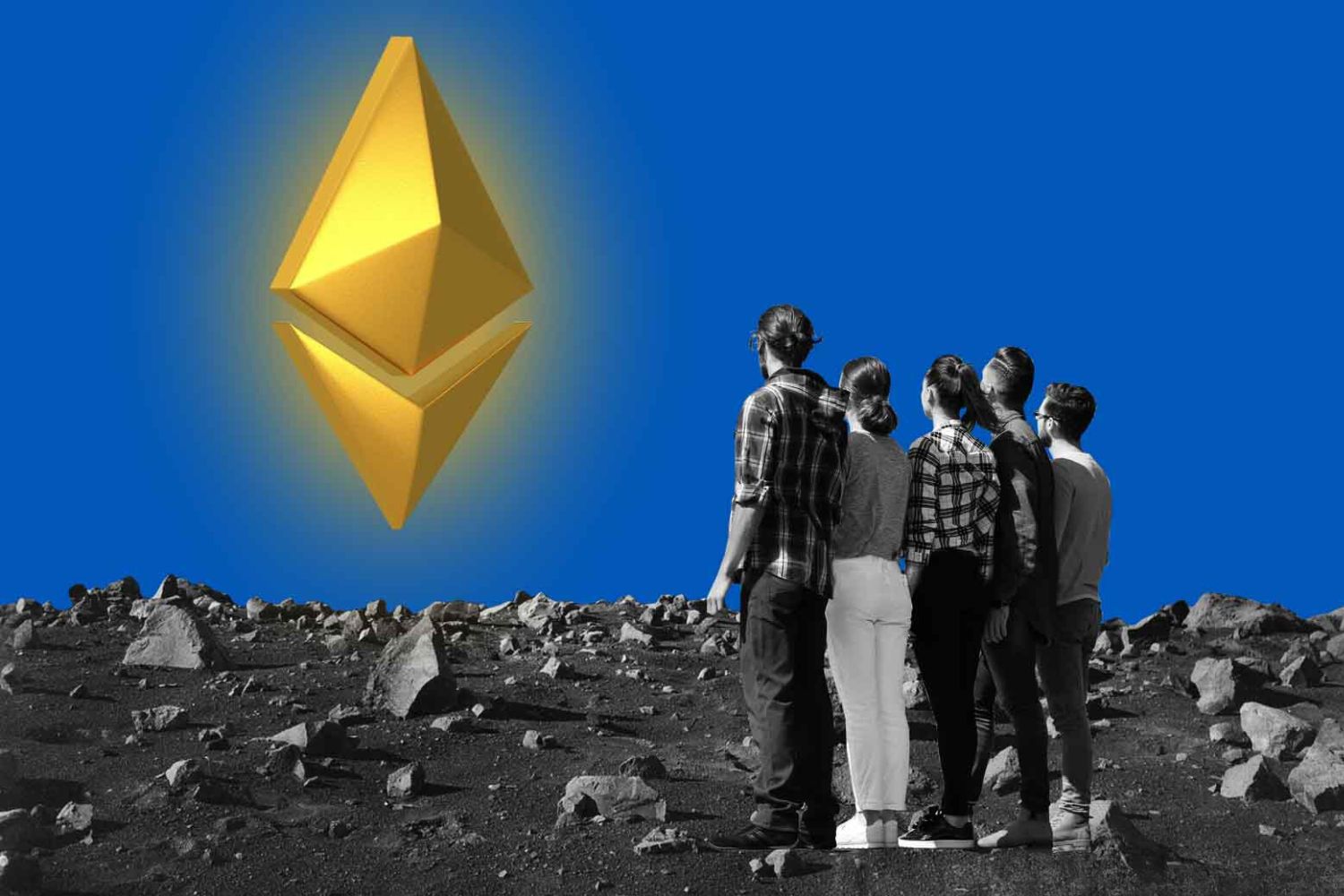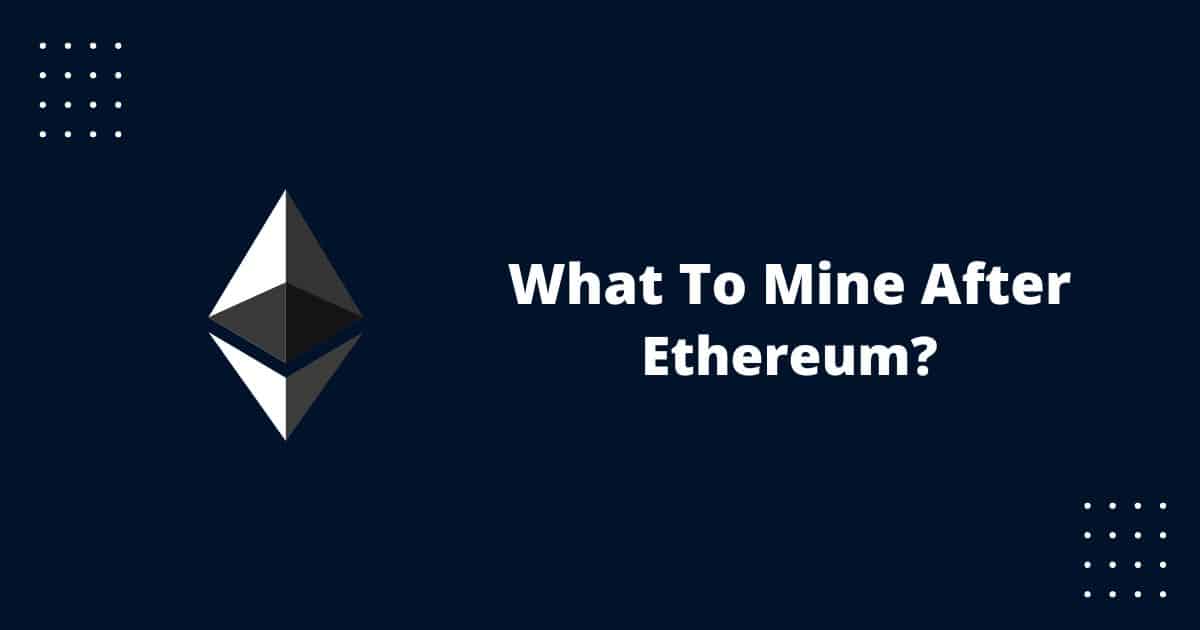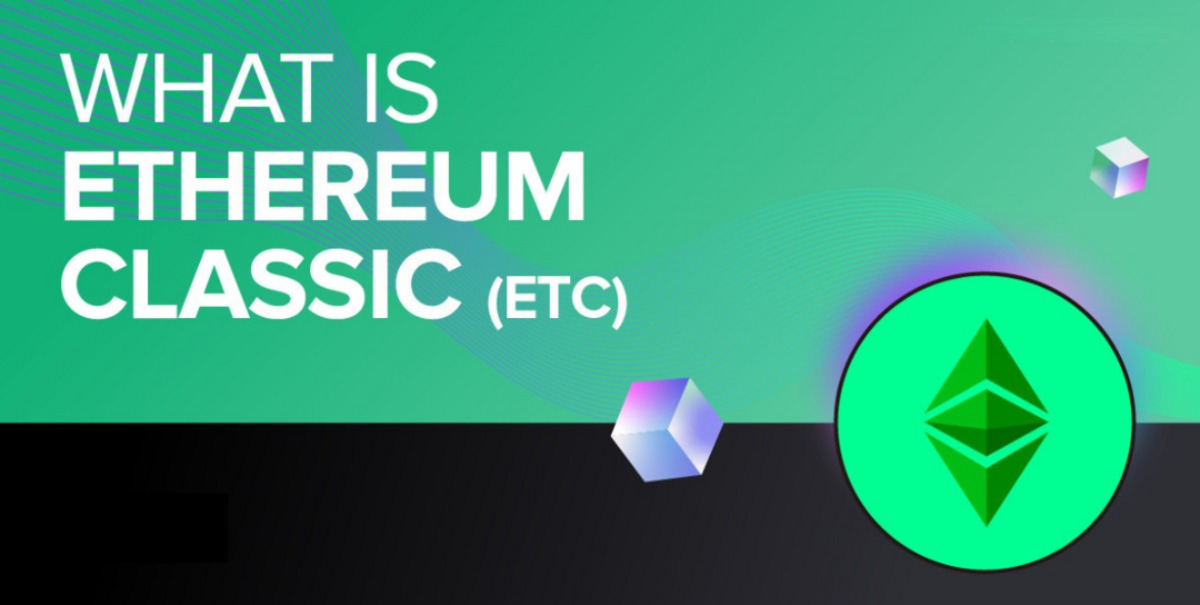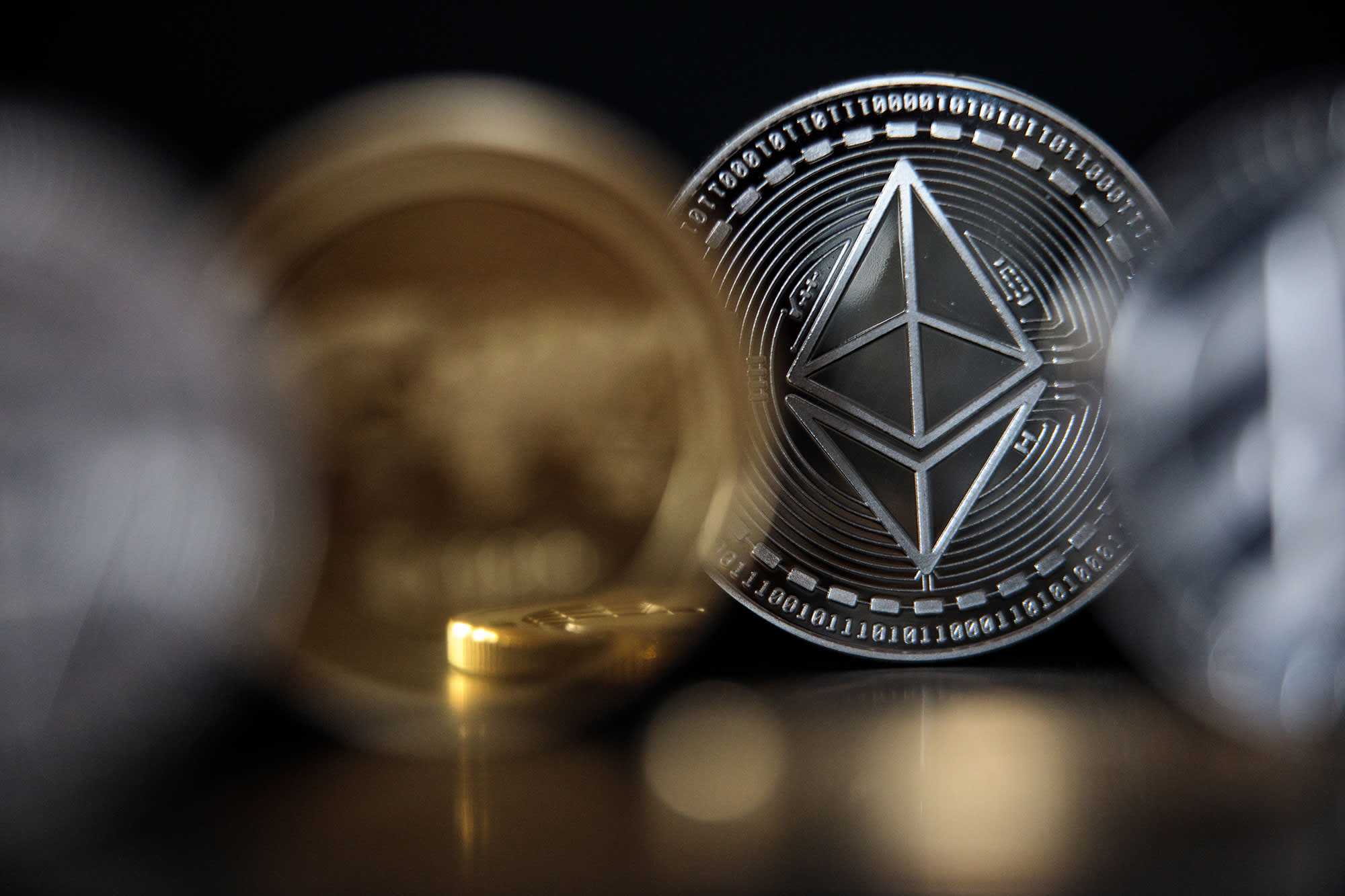Introduction
Welcome to the world of cryptocurrency, where digital currencies have revolutionized the way we think about money and transactions. Among the many cryptocurrencies available, Ethereum Classic is gaining significant attention. In this article, we will explore what Ethereum Classic is, its history, key differences from Ethereum, factors affecting its price, how to buy it, and whether it is a good investment.
Ethereum Classic, often referred to as ETC, is a decentralized blockchain platform that enables the creation and execution of smart contracts. It was created as a result of a disagreement within the Ethereum community regarding the handling of a major hack. While Ethereum underwent a hard fork to address the issue, a group of individuals staunchly believed in the immutability of the blockchain and continued to support the original Ethereum chain, leading to the birth of Ethereum Classic.
Since its inception, Ethereum Classic has carved out its own niche in the cryptocurrency market. While Ethereum (ETH) remains the more prominent and widely recognized platform, Ethereum Classic holds its own unique appeal for enthusiasts and investors. Understanding the history and key differences between the two platforms is essential in comprehending the value and potential of Ethereum Classic.
Ethereum Classic, like its counterpart Ethereum, operates on the principles of decentralization and smart contract execution. However, there are some noticeable distinctions between the two. Ethereum Classic retains the original Ethereum chain and does not support subsequent upgrades or changes initiated by Ethereum. It maintains a strong belief in the immutability of the blockchain and prioritizes security and stability.
Now that we have laid the foundation, let us delve deeper into the factors that influence the price of Ethereum Classic. Like any other cryptocurrency, the price of Ethereum Classic is influenced by various factors including market demand, utility, competition, regulatory developments, and investor sentiment. Understanding these factors can help investors make informed decisions when it comes to buying or trading Ethereum Classic.
Before we proceed further, let us take a look at the current price of Ethereum Classic and how it has performed over time. Please note that cryptocurrency prices are highly volatile and subject to rapid fluctuations. It is important to conduct thorough research and exercise caution when investing in cryptocurrencies.
Now that we have the groundwork laid out, let us explore how to buy Ethereum Classic and the steps involved in acquiring this digital asset. Cryptocurrency exchanges offer a platform for users to buy, sell, and trade a wide range of digital currencies, including Ethereum Classic. We will guide you through the process of setting up an account and purchasing Ethereum Classic.
Lastly, we will explore whether Ethereum Classic is a good investment option. Cryptocurrency investments come with inherent risks, and it is crucial to thoroughly evaluate the potential return on investment, market trends, and future developments. We will discuss various factors to consider when assessing the investment potential of Ethereum Classic.
What is Ethereum Classic?
Ethereum Classic (ETC) is a decentralized blockchain platform that operates on the same principles as Ethereum (ETH). It allows for the creation and execution of smart contracts—an innovative technology that enables the automation and execution of agreements without the need for intermediaries.
Ethereum Classic originated from a significant event in the Ethereum community. In 2016, the Decentralized Autonomous Organization (DAO), a blockchain-based venture capital fund built on Ethereum, was hacked. Millions of Ether (the cryptocurrency of Ethereum) were stolen, causing a divide within the community on how to address the issue.
While the majority of the Ethereum community supported a solution that involved a hard fork, a group of individuals believed in the immutability of the blockchain and maintained the view that the original chain should remain untouched. This led to the creation of Ethereum Classic—the continuation of the original Ethereum blockchain.
Ethereum Classic retains the core features and functionality of the Ethereum blockchain. It allows developers to build decentralized applications (dApps) and execute smart contracts. It also has its native cryptocurrency called Ethereum Classic (ETC), which is used as a medium of exchange within the platform.
One of the fundamental principles that sets Ethereum Classic apart from Ethereum is its emphasis on the immutability of the blockchain. It upholds the belief that once transactions are written onto the blockchain, they should remain unchanged and censorship-resistant. This approach aligns with the core principles of blockchain technology.
Ethereum Classic also places a strong emphasis on security. With the immutability of the blockchain comes the need for robust security measures to protect users and their assets. The Ethereum Classic community actively works on ensuring the stability and security of the network, making it a reliable platform for developers and users alike.
Despite being derived from Ethereum, Ethereum Classic has its separate ecosystem and community. The platform has its development team, dedicated community members, and a unique approach to governance and decision-making. Ethereum Classic is committed to preserving the values and principles that it was founded upon.
Ethereum Classic has gained recognition and adoption within the cryptocurrency community. It has attracted developers, enthusiasts, and investors who believe in the importance of preserving the integrity of the blockchain. Ethereum Classic’s unique proposition lies in its commitment to the original Ethereum chain, which resonates with individuals who value the principles of decentralization, security, and immutability.
History of Ethereum Classic
The history of Ethereum Classic can be traced back to the creation of the Ethereum blockchain in 2015. Ethereum, initially proposed by Vitalik Buterin, aimed to go beyond Bitcoin’s limited functionality by enabling the execution of complex smart contracts.
In 2016, the Ethereum community faced a major setback when the Decentralized Autonomous Organization (DAO), a venture capital fund built on the Ethereum platform, was hacked. The DAO hack resulted in the loss of millions of Ether (ETH), the native cryptocurrency of Ethereum.
Following the hack, the Ethereum community faced a critical decision: whether to perform a hard fork to undo the hack and retrieve the stolen funds or to continue with the original blockchain. The majority of the Ethereum community supported the hard fork, which resulted in the creation of a new blockchain known as Ethereum (ETH).
However, there was a faction within the Ethereum community who believed in the immutability of the blockchain and saw the hard fork as a violation of the core principles of decentralization and censorship resistance. These individuals continued to support the original Ethereum chain, which became known as Ethereum Classic (ETC).
Ethereum Classic emerged as a separate cryptocurrency with its own blockchain, retaining the transaction history of the original Ethereum chain. This decision to preserve the original chain was rooted in the belief that blockchain transactions should remain immutable and free from external interference.
Since its creation, Ethereum Classic has undergone various developments and community-led initiatives. The Ethereum Classic community has focused on maintaining the integrity of the blockchain through regular updates and security enhancements. They have built a robust ecosystem of developers, projects, and enthusiasts who are dedicated to advancing the principles of decentralization.
While Ethereum (ETH) became the more widely adopted and recognized platform, Ethereum Classic (ETC) carved out its own niche within the cryptocurrency market. It attracted a specific group of individuals who firmly believed in the values of decentralization, immutability, and resistance to censorship.
Over the years, Ethereum Classic has also faced its share of challenges and hurdles. It has weathered technical issues, regulatory scrutiny, and market volatility. However, the Ethereum Classic community has remained resilient and committed to the principles on which the project was founded.
Today, Ethereum Classic continues to exist as an alternative blockchain platform, offering developers the opportunity to build decentralized applications and execute smart contracts. It has established itself as a respected player in the cryptocurrency space, staying true to its original vision and attracting a passionate community of supporters.
Key Differences between Ethereum and Ethereum Classic
Although Ethereum (ETH) and Ethereum Classic (ETC) share a common origin, they have diverged in certain aspects due to differing ideologies and responses to significant events in their history. The key differences between Ethereum and Ethereum Classic can be categorized into three main areas: governance, immutability, and community.
Governance: One of the primary differences between Ethereum and Ethereum Classic lies in their respective approaches to governance. Ethereum operates on a model known as proof-of-stake (PoS), which involves the consensus of stakeholders who hold a significant amount of ETH. Ethereum Classic, on the other hand, relies on the traditional proof-of-work (PoW) mechanism, similar to Bitcoin, where miners compete to solve complex mathematical problems to validate transactions. This difference in governance models can result in variations in network security, scalability, and decision-making processes.
Immutability: Immutability, or the ability for the blockchain to remain unchangeable once transactions are recorded, is a crucial aspect of blockchain technology. Ethereum Classic places a strong emphasis on immutability, adhering to the principle that once transactions are written onto the blockchain, they should remain unchanged. This means that no changes or modifications can be made retrospectively, even in the face of controversial or contentious issues. Ethereum, on the other hand, has demonstrated a willingness to perform network upgrades and hard forks to address significant security issues or make improvements to the platform. This fundamental difference in approach reflects the contrasting views on the importance of immutability and the role of community consensus in decision-making processes.
Community: Another notable difference lies in the communities surrounding Ethereum and Ethereum Classic. While both communities share an interest in blockchain technology and the potential of decentralized applications, they attract distinct groups of individuals. The Ethereum community is larger and more mainstream, encompassing a broader range of developers, projects, and investors. Ethereum Classic, with its focus on a more immutable and resistant-to-change blockchain, tends to attract individuals who place a high value on the principles of decentralization, security, and censorship resistance.
These key differences between Ethereum and Ethereum Classic highlight the contrasting philosophies and approaches of the two platforms. Ethereum has gained greater adoption and recognition, particularly due to its scalability improvements and development of Ethereum 2.0, which aims to transition to a more efficient proof-of-stake model. On the other hand, Ethereum Classic has maintained a steadfast commitment to the original Ethereum chain, appealing to individuals who value the immutability of the blockchain and resist changes that they perceive as compromising decentralization and security.
It’s important to note that while there are differences between Ethereum and Ethereum Classic, they both contribute to the ongoing development and evolution of blockchain technology. Each platform provides unique opportunities and considerations for developers, investors, and users in the ever-expanding landscape of decentralized applications and smart contracts.
Factors Affecting the Price of Ethereum Classic
The price of Ethereum Classic (ETC) is influenced by a variety of factors, ranging from market demand and utility to regulatory developments and investor sentiment. Understanding these factors can provide valuable insights for investors and traders looking to navigate the volatile cryptocurrency market. Let’s explore some of the key factors that affect the price of Ethereum Classic.
Market Demand: Like any other tradable asset, market demand plays a significant role in determining the price of Ethereum Classic. Increased buying pressure from investors and traders can drive up the price, while selling pressure can cause it to decline. Factors that can impact market demand include the overall sentiment towards cryptocurrencies, market trends, and economic conditions.
Utility and Adoption: The utility and adoption of Ethereum Classic can have a direct impact on its price. As more developers build decentralized applications (dApps) and execute smart contracts on the Ethereum Classic platform, the demand for ETC may increase. Additionally, widespread adoption of Ethereum Classic as a means of payment or store of value could contribute to price appreciation.
Competition: Ethereum Classic operates in a competitive market, with other blockchain platforms offering similar features and functionalities. Competition from platforms like Ethereum (ETH), Cardano (ADA), and Polkadot (DOT) can influence the price of Ethereum Classic. News of technological advancements or partnerships from competing platforms may impact investor sentiment and, consequently, the price of ETC.
Regulatory Developments: The regulatory landscape surrounding cryptocurrencies can significantly impact their prices. Changes in regulations or government policies towards cryptocurrencies, such as increased oversight or restrictions, can create uncertainty and affect investor confidence. Positive regulatory developments, on the other hand, can boost market sentiment and drive the price of Ethereum Classic upwards.
Investor Sentiment: Investor sentiment and market psychology play a crucial role in determining the price of Ethereum Classic. Positive news, such as partnerships, technological advancements, or institutional investments, can create optimism among investors and drive up the price. Conversely, negative news or market downturns can lead to fear and selling pressure, causing the price to decline.
Overall Cryptocurrency Market: The price of Ethereum Classic is also influenced by the overall performance of the cryptocurrency market. Cryptocurrencies often exhibit high correlation, meaning that major market movements can impact the price of ETC. Factors like Bitcoin’s (BTC) price movements, market-wide trends, and macroeconomic events can have a spillover effect on Ethereum Classic’s price.
It is important to note that the cryptocurrency market is highly volatile and unpredictable. Prices can fluctuate rapidly, and factors affecting one cryptocurrency may impact others differently. Investors in Ethereum Classic should conduct thorough research, stay informed about market developments, and carefully evaluate the factors influencing its price before making any investment decisions.
Current Price of Ethereum Classic
The price of Ethereum Classic (ETC) is constantly changing due to the dynamic nature of the cryptocurrency market. It is important to note that cryptocurrency prices are highly volatile and can experience significant fluctuations within short periods of time. As such, investors and traders should exercise caution and conduct thorough research before making any investment decisions.
At the time of writing, the current price of Ethereum Classic is approximately [insert current price]. However, please note that this price is subject to change and may vary depending on the specific cryptocurrency exchange or trading platform you are using.
Ethereum Classic, like many other cryptocurrencies, has experienced both bullish and bearish periods in its price history. It reached its all-time high price in December 2017, where it briefly exceeded [insert highest price]. However, following the cryptocurrency market correction in 2018, the price of Ethereum Classic, along with many other digital assets, experienced a significant decline.
Since then, the price of Ethereum Classic has been subject to fluctuations influenced by various factors such as market sentiment, investor demand, regulatory developments, and overall cryptocurrency market trends. It is important for investors to monitor these factors closely to make informed decisions regarding the buying or selling of Ethereum Classic.
As with any investment, it is crucial to exercise caution and consider the inherent risks associated with cryptocurrency investments. The cryptocurrency market is highly speculative and can be impacted by external factors that are beyond individual control. Therefore, it is advisable to seek guidance and advice from financial professionals or conduct thorough research when entering the cryptocurrency market.
To track the current price of Ethereum Classic, investors can utilize various cryptocurrency data platforms and real-time price trackers. These platforms provide up-to-date information on the price, trading volume, and market capitalization of Ethereum Classic, allowing investors to make informed decisions based on accurate and reliable data.
It is important to conduct thorough research and exercise diligence when using cryptocurrency platforms to obtain accurate and trustworthy price information. The cryptocurrency market operates 24/7, and price information can be accessed in real-time, enabling investors to stay updated on the current price of Ethereum Classic and make timely investment decisions.
As with any investment, it is wise to take into consideration one’s risk tolerance, financial goals, and investment horizon when considering the purchase or sale of Ethereum Classic or any other cryptocurrency. Stay educated, remain informed about market trends, and exercise caution when participating in the cryptocurrency market.
How to Buy Ethereum Classic
If you are interested in buying Ethereum Classic (ETC), there are several steps you can follow to acquire this digital asset. Here is a general guide on how to buy Ethereum Classic:
Step 1: Choose a cryptocurrency exchange: The first step is to choose a reputable cryptocurrency exchange that supports the trading of Ethereum Classic. Some popular exchanges that offer ETC trading include Binance, Coinbase, Kraken, and Bittrex. Take the time to research and compare different exchanges to find one that best suits your needs in terms of security, user interface, fees, and supported trading pairs.
Step 2: Sign up and complete verification: Once you have selected a cryptocurrency exchange, you will need to create an account. Sign up on the exchange’s website and provide the required information to complete the registration process. In most cases, you will need to verify your identity by providing government-issued identification documents and potentially completing a Know Your Customer (KYC) process.
Step 3: Deposit funds: After your account is set up, you will need to deposit funds into your exchange wallet. Most exchanges offer a range of deposit options, including bank transfers, credit/debit cards, and other cryptocurrencies. Select the method that is most convenient for you and follow the instructions provided by the exchange to transfer funds into your account.
Step 4: Place an order: Once your account is funded, you can place an order to buy Ethereum Classic. On the exchange platform, locate the ETC trading pair (e.g., ETC/USD or ETC/BTC) and enter the amount of ETC you wish to purchase. You can choose between market orders (buy at the current market price) or limit orders (set a specific price at which you want to buy).
Step 5: Review and confirm: Before finalizing the purchase, carefully review your order details, including the quantity of Ethereum Classic and the total cost. Confirm the order and wait for it to be executed. Once the order is processed, you will see the Ethereum Classic credited to your exchange wallet.
Step 6: Secure your ETC: After the purchase is completed, it is essential to ensure the security of your Ethereum Classic. Consider transferring the ETC from the exchange wallet to a personal wallet that you control, such as a hardware wallet or a software wallet. This step provides you with more control over your assets and minimizes the risk of potential exchange hacks or theft.
Step 7: Stay informed and manage your investment: After buying Ethereum Classic, it is crucial to stay informed about market trends, news, and developments related to the cryptocurrency. Monitor the price and make informed decisions based on your investment strategy and goals. Consider setting up alerts or utilizing portfolio management tools to stay on top of your holdings.
Keep in mind that the process of buying Ethereum Classic may vary slightly depending on the cryptocurrency exchange you choose and the specific requirements of each platform. It is essential to read and follow the instructions provided by your selected exchange to ensure a smooth buying experience.
Finally, remember that investing in cryptocurrencies carries risks, and it is important to only invest what you can afford to lose. Conduct thorough research, seek professional advice if needed, and make informed decisions when buying and managing your Ethereum Classic investment.
Is Ethereum Classic a Good Investment?
Deciding whether Ethereum Classic (ETC) is a good investment requires careful consideration of various factors, including market dynamics, project fundamentals, and personal investment goals. Here are some points to consider when evaluating Ethereum Classic as an investment:
1. Historical Performance: It is important to analyze the historical performance of Ethereum Classic. While past performance does not guarantee future results, it can provide insights into the coin’s volatility and potential returns over time.
2. Market Outlook: Assessing the market outlook for Ethereum Classic involves analyzing factors such as adoption rate, demand for decentralized applications (dApps), and competition from other blockchain platforms. Research the potential use cases and partnerships involving Ethereum Classic to gauge its growth potential.
3. Development Team and Community: The strength and activity of the development team and community can signal the project’s long-term viability. A dedicated team that actively contributes to the development and improvement of Ethereum Classic is generally considered a positive sign.
4. Technological Advancements: Stay informed about technological advancements and updates in Ethereum Classic. These advancements can enhance the platform’s functionality, scalability, and security, potentially attracting more users and developers.
5. Regulatory and Legal Factors: Consider the potential impact of regulatory and legal developments on Ethereum Classic. Changes in regulations or increased scrutiny can affect the overall cryptocurrency market and investor sentiment, influencing the price of ETC.
6. Risk Tolerance: Assess your own risk tolerance and investment strategy. Cryptocurrency investments tend to be highly volatile and involve a degree of risk. It is important to only invest what you can afford to lose and diversify your investment portfolio.
7. Research and Due Diligence: Conduct thorough research and due diligence before making any investment decisions. Stay updated on the latest news, market trends, and expert opinions about Ethereum Classic to make informed investment choices.
It is worth noting that investing in cryptocurrencies carries inherent risks, and prices can be influenced by various unpredictable factors. Cryptocurrency investments are subject to market volatility, technological risks, regulatory changes, and other factors beyond individual control. Therefore, it is advisable to seek advice from financial professionals and to carefully evaluate your investment goals and risk tolerance.
Ultimately, whether Ethereum Classic is a good investment depends on individual circumstances, market conditions, and informed decision-making. Keep in mind that it is essential to stay vigilant, adapt to changing market dynamics, and regularly reassess your investment strategies to make informed choices in the ever-evolving cryptocurrency space.
Conclusion
Ethereum Classic (ETC) is a decentralized blockchain platform that offers a unique proposition in the world of cryptocurrencies. As we explored in this article, Ethereum Classic retains the original Ethereum blockchain, emphasizing immutability and security. Its commitment to these principles has attracted a dedicated community of developers and investors who believe in the importance of maintaining the integrity of the blockchain.
While Ethereum Classic shares a common origin with Ethereum, it has carved out its own niche in the cryptocurrency market, appealing to those who value decentralization, security, and censorship resistance. However, it is important to acknowledge the risks associated with investing in cryptocurrencies, including price volatility, regulatory uncertainties, and technological advancements.
Before investing in Ethereum Classic or any other cryptocurrency, it is crucial to conduct thorough research, assess your risk tolerance, and align your investments with your financial goals. Stay informed about market developments, technological advancements, and regulatory changes to make sound investment decisions.
Please note that the information provided in this article is for educational purposes only and should not be construed as financial advice. Cryptocurrency investments are subject to market risks, and it is recommended to consult with a professional financial advisor before making any investment decisions.
As the cryptocurrency market continues to evolve, Ethereum Classic remains a prominent player offering decentralized solutions and maintaining the original values of the blockchain. Whether Ethereum Classic is a good investment ultimately depends on individual circumstances, market conditions, and personal investment goals.







